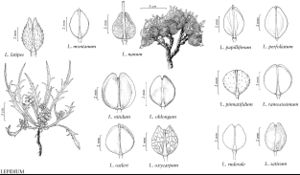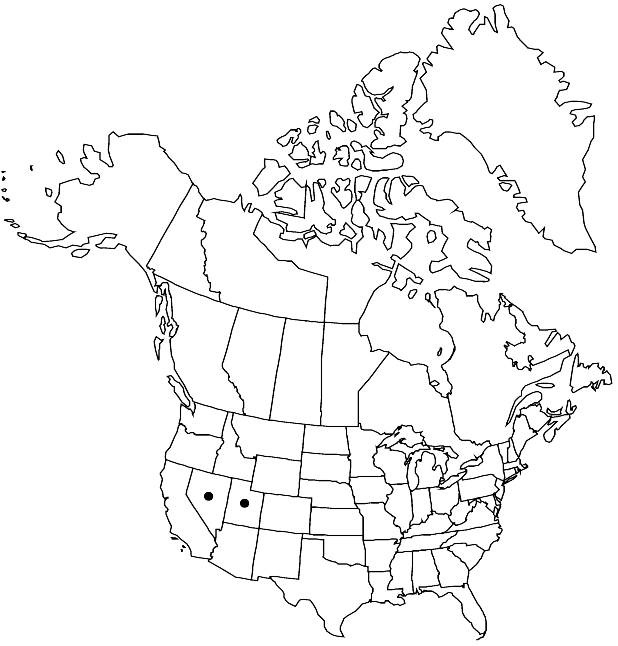Lepidium nanum
Botany (Fortieth Parallel), 30, plate 4, figs. 5–7. 1871.
Perennials; (forming pincushion-like, pulvinate mounds, caudex woody, to 1.5 cm diam., buried, much-branched, covered with persistent leaves); puberulent. Stems simple from base (caudex branches), erect to ascending, unbranched distally, 0.05–0.2 dm. Basal leaves rosulate; petiole undifferentiated; blade obovate, 2.5–5 cm × 15–25 (–35) mm, margins entire, (ciliolate), apex deeply 3-lobed (lobes ovate to suborbicular, margins entire). Cauline leaves absent. Racemes slightly elongated in fruit, (2–7-fruited); rachis puberulent, trichomes straight, cylindrical. Fruiting pedicels suberect to ascending, often straight, (terete), 2–4.5 × 0.2–0.3 mm, puberulent throughout. Flowers: sepals (tardily deciduous), obovate, 1.3–4 × 0.8–1.1 mm; petals pale-yellow or creamy white, spatulate, 1.8–2.9 × 0.8–1.2 mm, claw 0.8–1.1 mm; stamens 6; filaments 1.4–2 mm, (glabrous); anthers 1.4–2 mm. Fruits ovate, 2–4.2 × 1.5–3 mm, often apically winged, apical notch 0.1–0.2 mm deep; valves thin, smooth, not veined, glabrous; style (0.4–) 0.6–1 (–1.2) mm, exserted beyond apical notch. Seeds oblong, 1–2 × 0.8–1 mm.
Phenology: Flowering May–Jun.
Habitat: Gypsum knolls, tufa mounds around hotsprings, quartzite gravel, barren areas with shale and chalky soil, gravelly hillsides, white calcareous soils
Elevation: 1500-2200 m
Discussion
Lepidium nanum is most common in Nevada and is known in Utah from collections in Tooele County.
Selected References
None.
Lower Taxa
"elongated" is not a number."thick" is not a number."dm" is not declared as a valid unit of measurement for this property.

